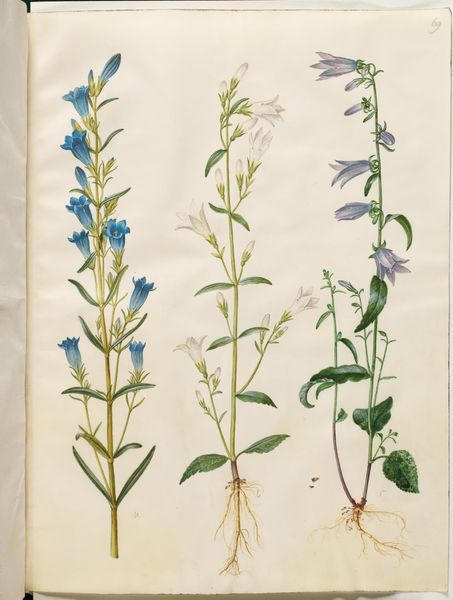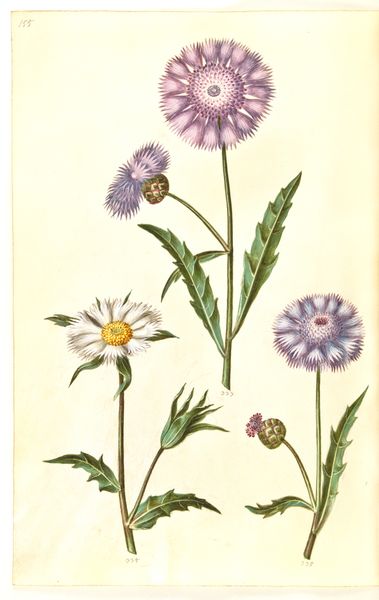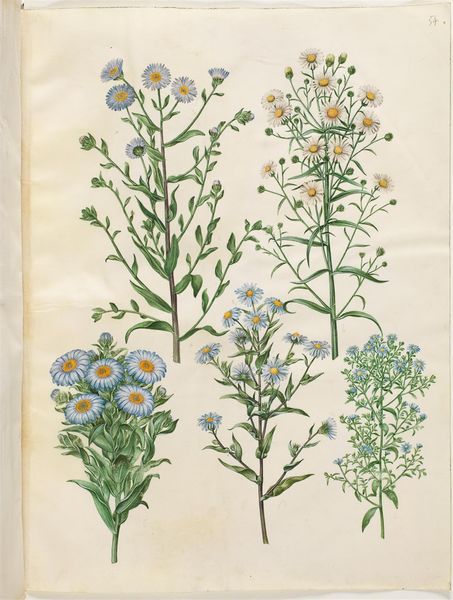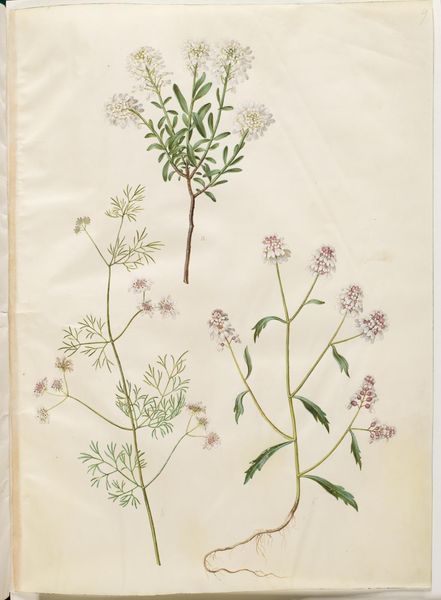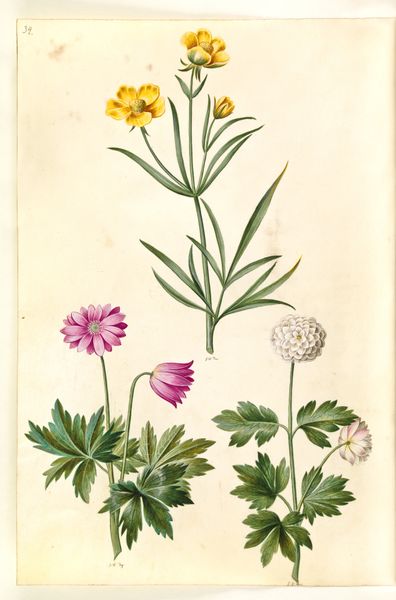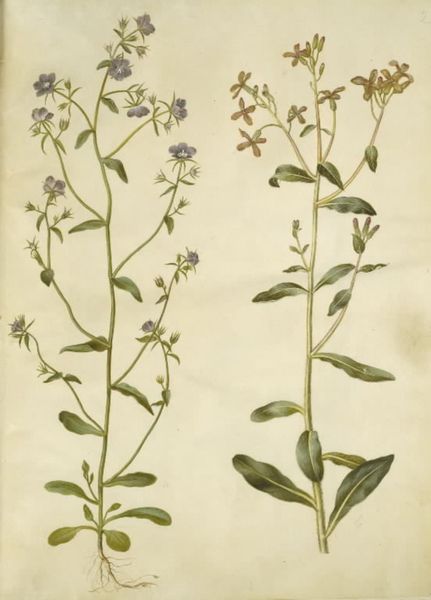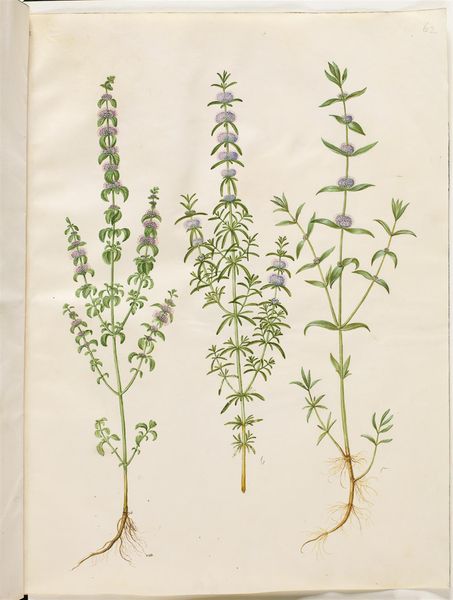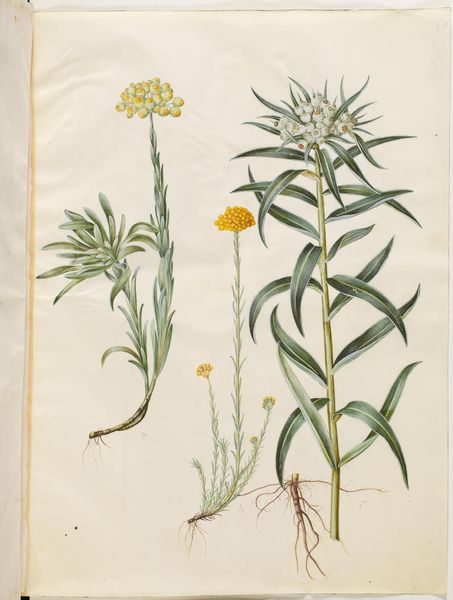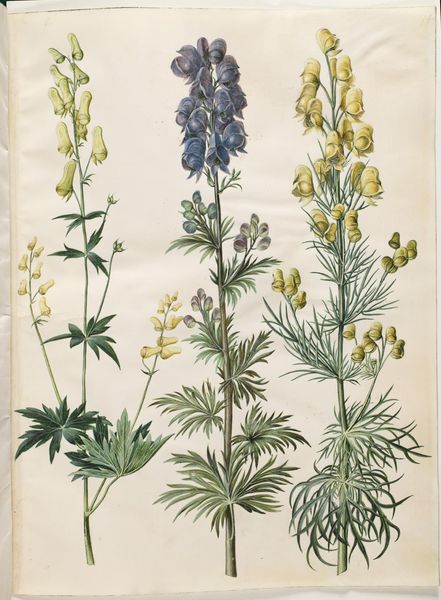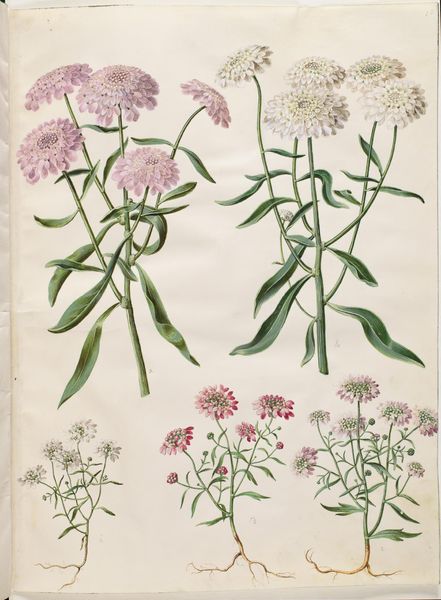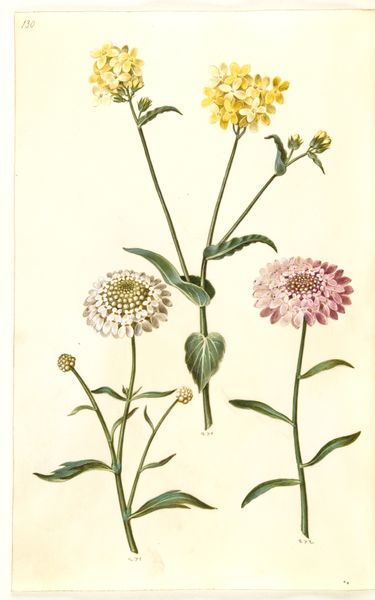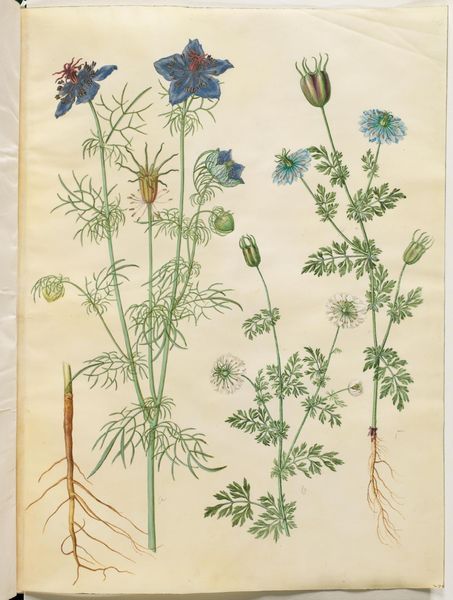
Spiraea salicifolia (pilebladet spiræa); Catananche caerulea (blå rasleblomst) 1649 - 1659
0:00
0:00
Dimensions: 505 mm (height) x 385 mm (width) (bladmaal)
Curator: Here we have "Spiraea salicifolia; Catananche caerulea" a botanical drawing rendered sometime between 1649 and 1659 by Hans Simon Holtzbecker, housed here at the SMK, the National Gallery of Denmark. The work is on paper using watercolor and gouache techniques. Editor: My first thought? Elegant restraint. It's almost a scientific record, yet it breathes with such delicacy. You feel like you're peering into a secret garden, a botanist's treasured observation. Curator: Botanical art, particularly during Holtzbecker's time, served a very specific purpose. Beyond mere aesthetics, these drawings documented flora for medicinal and scientific study. Each detail carries the weight of accuracy, of symbolic representation. Editor: Absolutely. I'm drawn to how he captures light on the leaves – there's this gentle glow. The plants have their own subtle personalities! It isn't cold observation at all. There’s almost a spiritual feeling radiating off them. Does that sound odd? Curator: Not at all. Color plays a significant role in that perception, especially regarding memory. Holtzbecker's choices for these flowers activate memories – blue for faithfulness, white for purity…these are motifs as old as art itself. The pale background contrasts beautifully with the vibrant green and delicate floral hues, evoking associations with idealized notions of nature. Editor: And each tiny vein meticulously rendered! That blend of accuracy and feeling... it speaks to how connected humans were to nature, what close observers they were. Now, we barely notice anything blooming on the sidewalk, if we even *walk* anywhere anymore. Curator: Precisely! It's a reminder of a world where understanding nature was not just an intellectual pursuit but a matter of daily survival. Also, Holtzbecker doesn't shy away from including imperfections – a slightly browned leaf, a drooping flower. Editor: Adds a lovely authenticity, doesn’t it? Less an idealized vision, more an honest portrait. It grounds the image, prevents it from floating away into pure romanticism. So, the painting really captures fleeting beauty rather than a permanent symbol? Curator: I think that tension – between symbolic representation and observed reality – is exactly what makes it so compelling after all these years. Editor: I concur completely! It's an evocative reminder of a slower time, and a deeper way of seeing. Thank you for revealing so much.
Comments
No comments
Be the first to comment and join the conversation on the ultimate creative platform.
